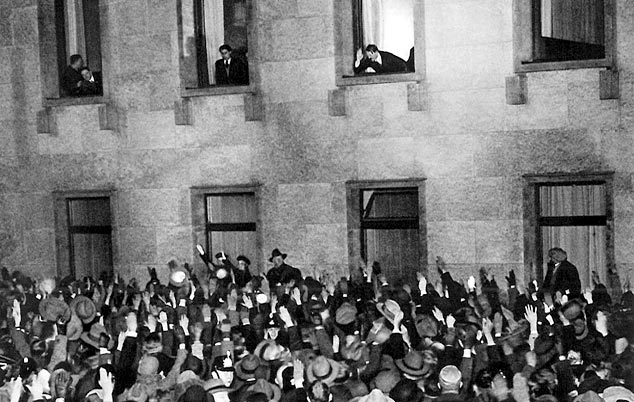
January 30, 1933: President Paul von Hindenburg appoints Adolf Hitler as Chancellor. That evening, his adherents celebrate in Berlin. In a quickly organized torchlight parade, the SA and SS join members of the "Stahlhelm" paramilitary organization of World War I veterans in marching through the government district.
The National Socialists do not hold a majority in the new government. Adolf Hitler, Wilhelm Frick and Hermann Göring are the only three of the cabinet’s twelve members that belong to the Nazi party. Hitler’s national conservative partners plan to "hedge in" and "tame" the party's "Führer" – its "leader." They expect to exploit his party's mass base for their own purposes. But as events later show, they are only clearing the way for Hitler and the National Socialists.
Nor does either the Nazi party or the government parties together hold a majority in parliament, the Reichstag. Like every cabinet since March 1930, Hitler's government instead draws its power from the special emergency authority granted by the constitution to the President. Hitler's predecessors had already attempted to establish an authoritarian system of government with the aid of this executive cabinet. So when Hitler comes to power, anti-democratic forces and ideas have already gained a great deal of ground.
Continue reading: "The path to dictatorship"
Back to the overview page "The beginnings of the Nazi dictatorship"



